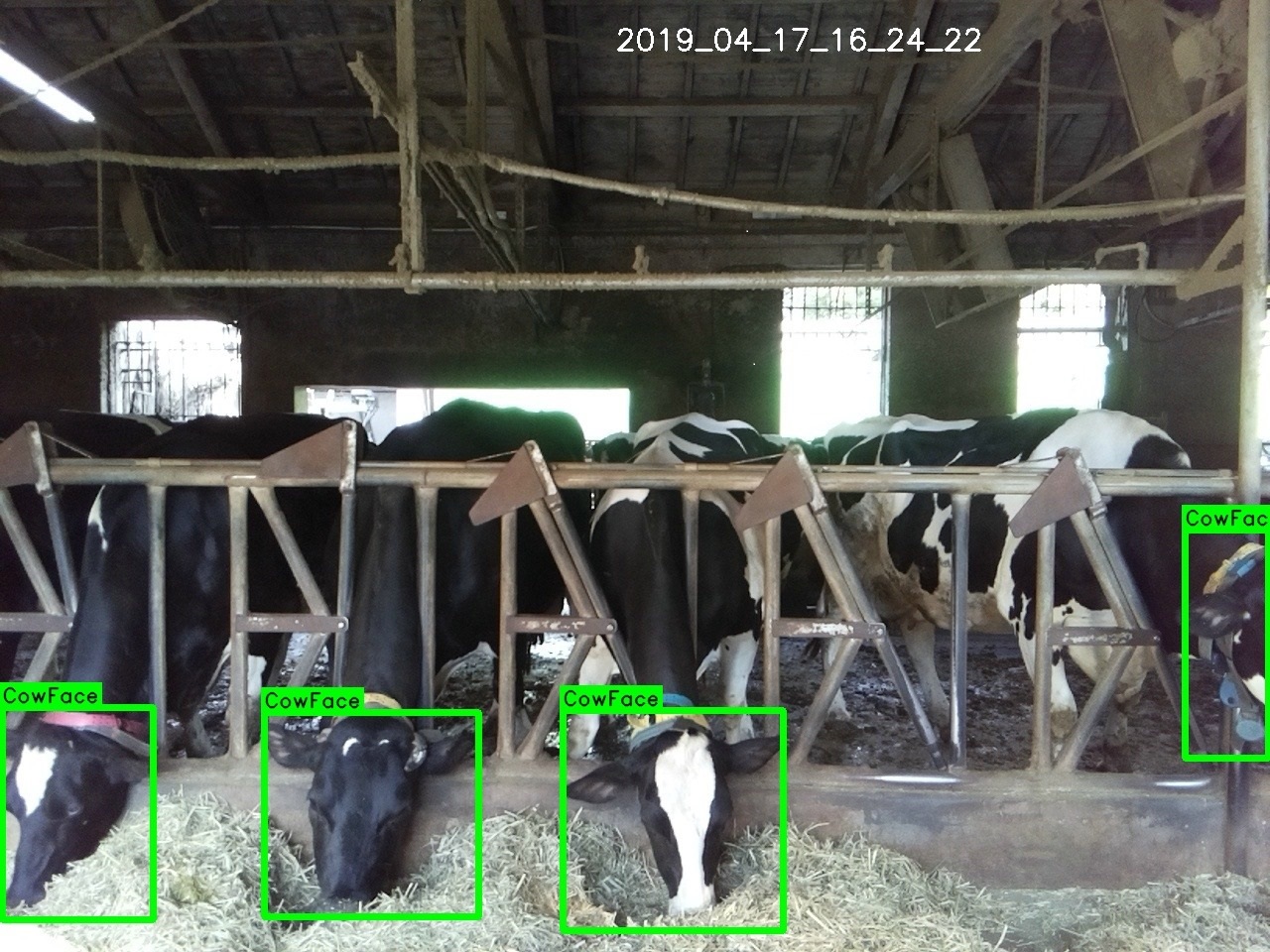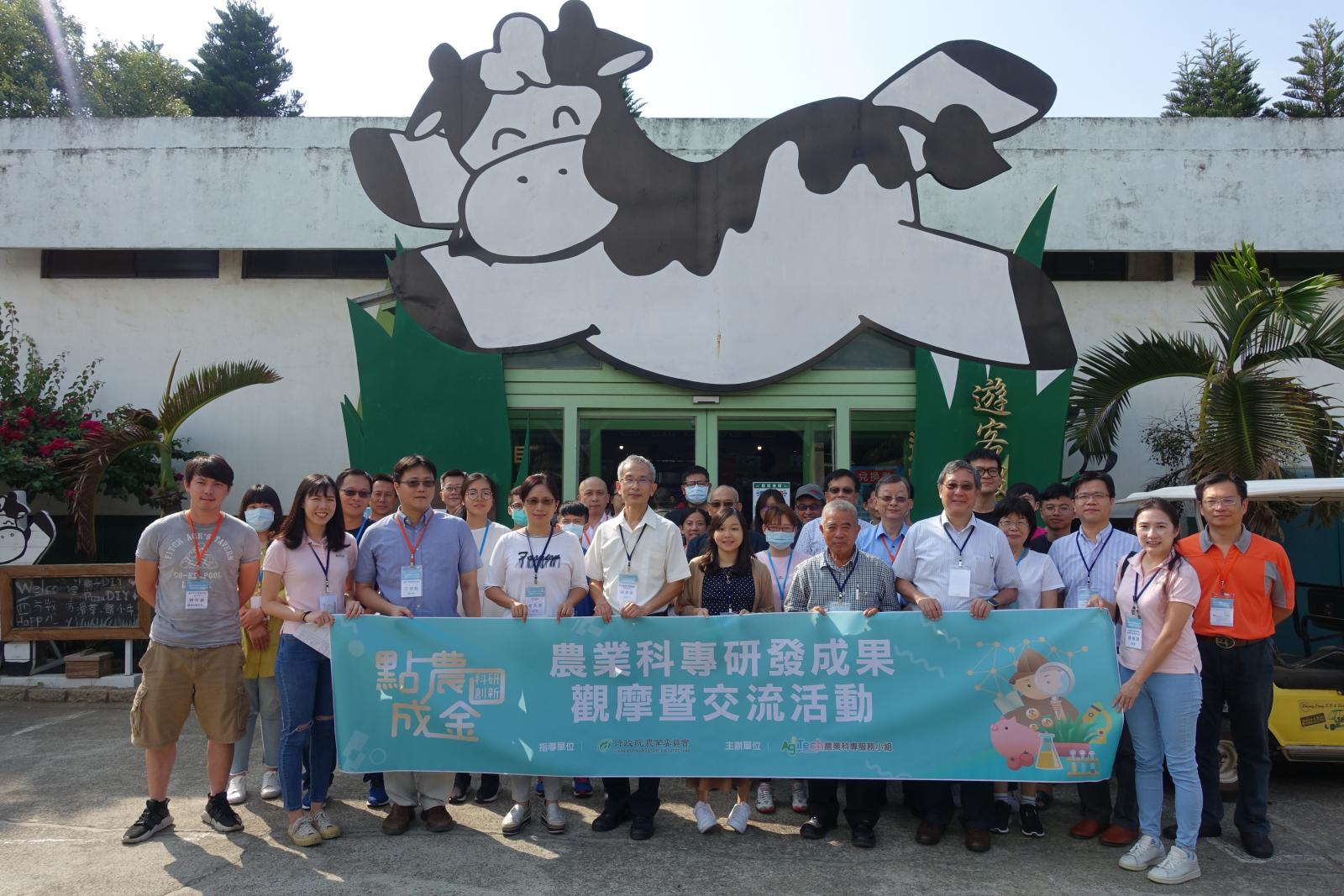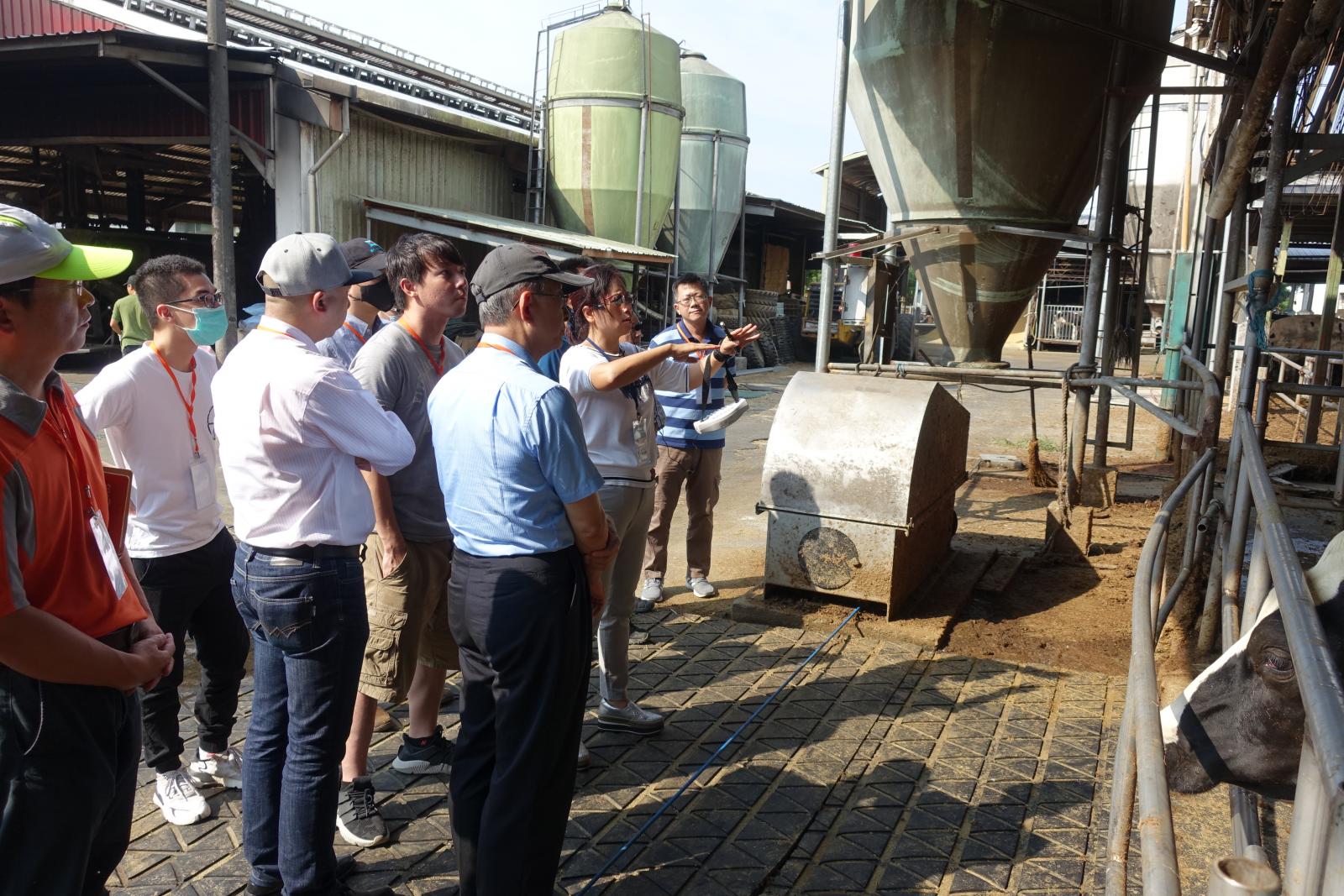Dairy farms introduce health monitoring smart management; outstanding technology developed for supporting summer milk production
Since launching the AgTech program to subsidize agricultural technology research by academics and researchers in 2010, so far the Council of Agriculture (COA) of the Executive Yuan has subsidized a total of 43 projects by various academic and research institutions. The COA has further worked to industrialize and commercialize R&D achievements. On average each research project has produced 1.63 cases of technology transfer, as well as 1.21 cooperative studies, and the program has stimulated businesses to invest over NT$450 million. The AgTech R&D achievements interaction activity organized by the Taiwan Institute of Economic Research at the behest of the COA was held on September 18 at the Four Ways Ranch in Miaoli County. On display at the site were the results of the “dairy cow heat stress health monitoring smart management system” project, including explanations of dairy cow health monitoring devices and the monitoring platform. There were also guides to introduce relevant equipments as well as to introduce the operation of the dairy cow behavior identification platform. It is hoped that through interaction between industry and academia, there will be further understanding of contemporary trends in smart management in the livestock industry.

Amelioration of heat stress for cows, easy and convenient smart management for the dairy industry
The COA points out that heat stress in dairy cows is one of the major challenges for the management of dairy farms. When the temperature exceeds 24 degrees Celsius, dairy cows will show symptoms such as higher body temperatures, rapid breathing, and reduced food consumption, leading to reduced production of milk. Commonly seen methods used on dairy farms in Taiwan to lower the temperature include turning on fans and spraying water for as long as eight to ten straight hours. This makes the cow pens muddy and can lead to problems of mastitis and lameness.

The COA explains that Professor Hsu Jih-Tay of the Department of Animal Science and Technology at National Taiwan University has long been studying the biology and rearing of dairy cows, and cooperated with the Institute for Information Industry to develop an “integrated system for monitoring dairy cow health.” The system operates through Internet of Things technology to gather dairy farm temperature and humidity data, to collate signal and image information on dairy cow behaviors including drinking, ruminating and feeding, to analyze the connection between heat stress in dairy cows and the environment, and to use smart systems to automatically control things like fans, water spraying, and mist spraying equipments. Dairy farmers can use their mobile devices to go online at any time and enter cloud-enabled smart services to do management tasks. In addition, the system has real-time recording functions, and it can distinguish dairy cow heat stress situations and automatically send warnings to dairy farm management personnel who can remotely control the farm’s cooling system.
The COA states that the dairy cow heat stress health management system invented through this project will not only sharply reduce labor costs, it can effectively control temperature and humidity indexes in cow pens. Even more importantly, it can reduce losses of 10-15% in milk production. The system can be optimized to specifications of different venues, and can be used to undertake individual cow or group management. It precisely stays on top of bovine health on dairy farms, can stabilize the quantity and quality of milk produced, and effectively upgrades the effectiveness of dairy cow health management.

